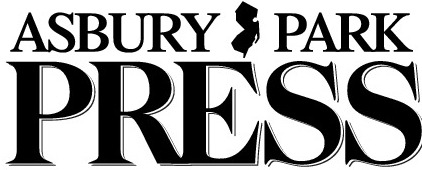APP Q&A with Chelsea Wolfe on the film “Lone”


Chelsea Wolfe is going to the movies.
The singularly intense singer/songwriter, whose work combines everything from folk to metal with electronic soundscapes, recently drew on music and lyrics from her 2013 album “Pain is Beauty” to craft the dreamlike and darkly beautiful new film “Lone.”
Directed by Baltimore native Mark Pellington, whose music video credits include Bruce Springsteen’s “Lonesome Day” and “Girls in Their Summer Clothes” as well as Pearl Jam’s “Jeremy” and U2’s “One,” the 50-minute film is now available via USB drive on Wolfe’s website.
Wolfe, a California native with upcoming shows Friday, May 30, at the Keswick Theatre in Glenside, Pa. and Sunday, June 1, at New York City’s Apollo Theater, recently took the time for an email interview to discuss “Lone.”
Q: Did you always intend to create a visual component to “Pain is Beauty,” or is “Lone” more a creation made in response to the music?
A: “Lone” as a film is something that Mark Pellington visualized. We were originally going to just do a music video for the song “The Waves Have Come,” but as we met to talk over things, he was inspired to do a longer film using five songs from “Pain is Beauty,” which wasn’t out yet at the time. It’s definitely a response to the music and the emotions within the songs.
Q: What do you believe makes Mark Pellington’s visual style a good fit for the sound of the “Pain is Beauty” tracks?
A: He’s able to create a very frantic, beautiful vibe and translate things in a dark and interesting way. I love his work, and he is also a great person.
Q: When creating the structure and imagery for the film, did you and Mark discuss any common reference points, such as films or paintings?
A: Mark asked me what came to mind when I thought of the music. For me, there was a constant forward motion, like horses running. Also, reflections of memory and dreams, the color red, blurred reality, healing and overcoming. But I left a lot of it open for his interpretation as well.
Q: Mark has called the film “a sight and sound exploration into the themes of nature, sexuality, memory, mortality, forgiveness, love, innocence, fragility, violence and beauty.” Would you agree with that statement, and how much did you and he consciously discuss these themes while working on “Lone”?
A: I would agree, yes. We worked closely together during the process of planning the film, but once he was filming it became his world. He was the master over this surreal universe.
Q: You said in a past interview that “The Waves Have Come” was originally inspired by footage of the 2011 earthquake and tsunami in Japan. How does it feel to see the song now paired in the film with scenes of destruction, both natural and man-made?
A: I think it’s very emotional to see because it’s so real. I wanted to bring in the macro and the micro to the film — the largeness and wildness of the world. Something so far away, yet also, the effects on human lives and close-up look at families and love stories. We wanted to combine our original footage with old stock footage of vintage home videos, raw wildlife and natural disasters. Each clip and character carries an emotion, shame, guilt, personality, death. I am sort of the narrator throughout, guiding you on this journey through memory and dreams. Sometimes it’s hard to decipher what’s real and what is just a foggy remembrance.
Q: Several of the songs on “Pain is Beauty” seem to be inspired by nature, but they still have an electronic sound. Can you discuss juxtaposing the electronic sounds of the music with several wide-open landscape scenes in the film?
A: There was a time I was thinking about the possibility of a future without electricity, a return to primitive, and it made me want to take advantage of these instruments that need electricity to survive, need to be plugged in to make their sounds. About three to four years ago, I wanted to add an electronic music element to my band, and I met Ben Chisholm while on tour with another project he was in. He joined my band, and we found that we could write music well together. He is great with making electronic beats and working with old synths and taught me some things about it as well.
Q: The narrative running through and connecting the various vignettes in “Lone” is ambiguous and seems very open to interpretation. Do you believe there is any one “right” way to interpret the film, or are you curious to see what fans make of the work?
A: I prefer to leave things a bit open. Even Mark hasn’t fully told me what everything means to him, but he knows.
Q: Along with songs from “Pain is Beauty,” the film features original music by you and Ben Chisholm. How was the process of creating music specifically for the film different than creating music for one of your albums?
A: Ben took elements of the songs and additional new music to create the soundtrack. He also did the sound design for the film. I would record vocals, or he would record our violin player Andrea Calderon, and he’d remix them into new pieces for the film. He did a really beautiful job.
